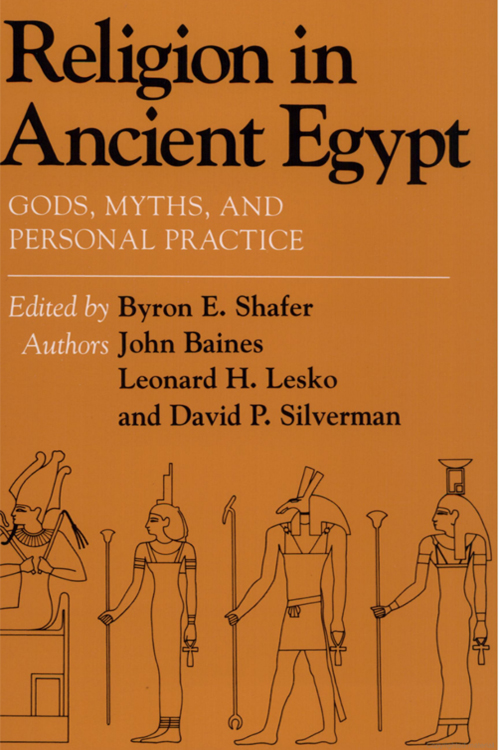Text summary
From: Book · Byron E. Shafer · 1991

Text: Full Translation
Archaic Egyptian ⟶ English a
| Translation | |
|---|---|
| P. 92 | |
| Utterance 600 | |
| Atum Kheprer, you have come to be high on the hill, you have arisen on the Benben stone in the mansion of the Benpen in Heliopolis, you spat out Shu, you expectorated Tefnut, and you put your two arms around them as the arms of a Ka symbol (|_|), so that your ka (personality) might be in them. O Atum, place your arms around the king, around this edifice, around this pyramid as the arms of a ka, so that the King's ka may be in it, firm forever and ever. O Atum, place your protection over this king, over this pyramid of his, over this edifice of the king, so that you may guard against anything happening evilly against him forever and ever, just as your protection was placed over Shu and Tefnut. | |
| O great Ennead which is in Heliopolis—Atum, Shu, Tefnut, Geb, Nut, Osiris, Isis, Seth, Nephthys—children of Atum, extend his heart (good-will) to his child (the king) in your name of Nine Bows. Let his back be turned from you toward Atum, so that he may protect this kind, so that he may protects this pyramid of the kind, so that he may protect this edifice of his from all the gods [and] from all the dead, and so that he may guard against anything happening evilly against him forever and ever. | |
| Source(s) a Shafer et al., RIAE, 92 launch . | |
Original source data
Background
"Utterance 600: English Translation of Heliopolis Creation Myth by Leonard H. Lesko" is a version of the Heliopolis creation myth by Leonard H. Lesko. The translation is based on the Pyramid Texts, or, inscriptions found inside the Pyramid of Pepi II in Saqqara, Egypt. It was published in 1991. Leonard H. Lesko is a prominent Egyptologist who taught at Brown University.
Cite this page
OMNIKA Foundation Contributors. ""Utterance 600": English Translation of Heliopolis Creation Myth by Leonard H. Lesko." OMNIKA – World Mythology Index, OMNIKA Foundation, 19 Nov. 2019, omnika.org/stable/325. Accessed 24 Dec. 2025.
OMNIKA (2019, November 19). "Utterance 600": English Translation of Heliopolis Creation Myth by Leonard H. Lesko. Retrieved from https://omnika.org/stable/325
OMNIKA Foundation Contributors. ""Utterance 600": English Translation of Heliopolis Creation Myth by Leonard H. Lesko." Las Vegas, NV: OMNIKA Foundation. Created November 19, 2019. Accessed December 24, 2025. https://omnika.org/stable/325.






